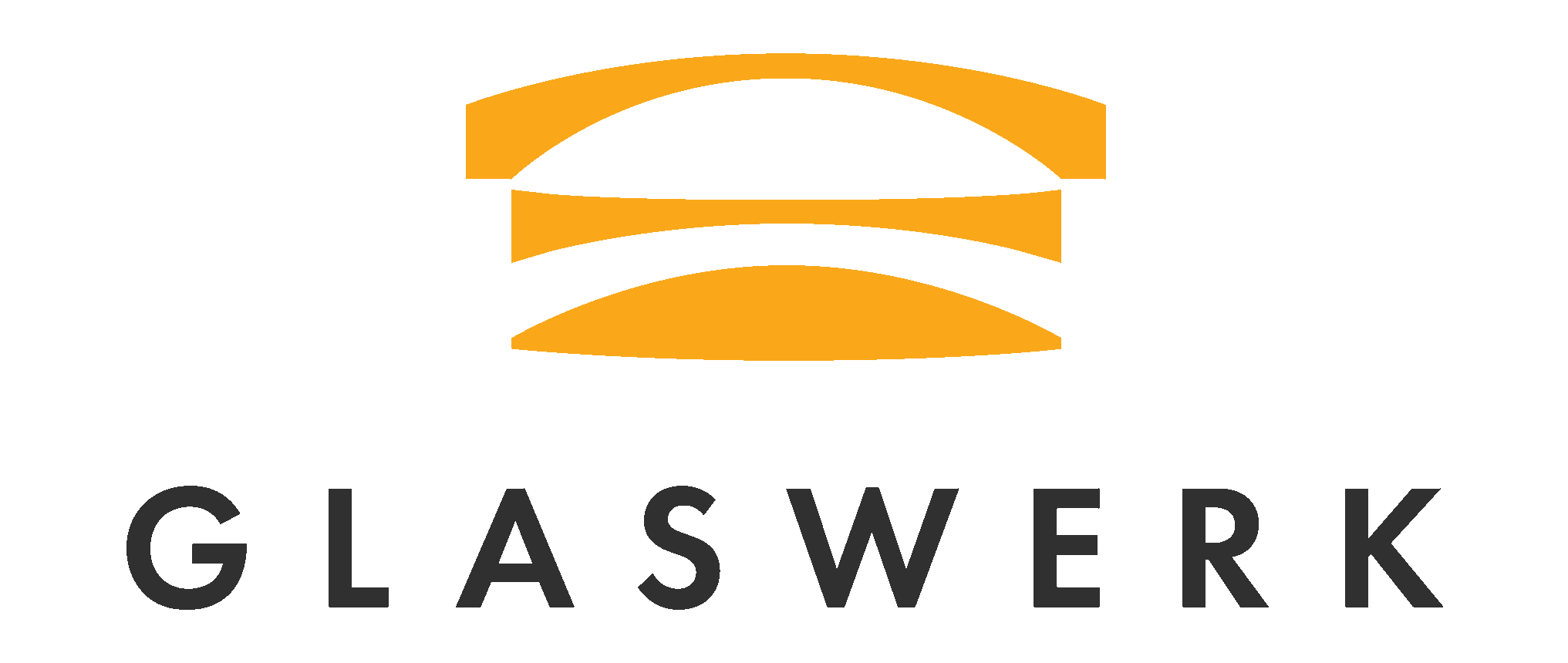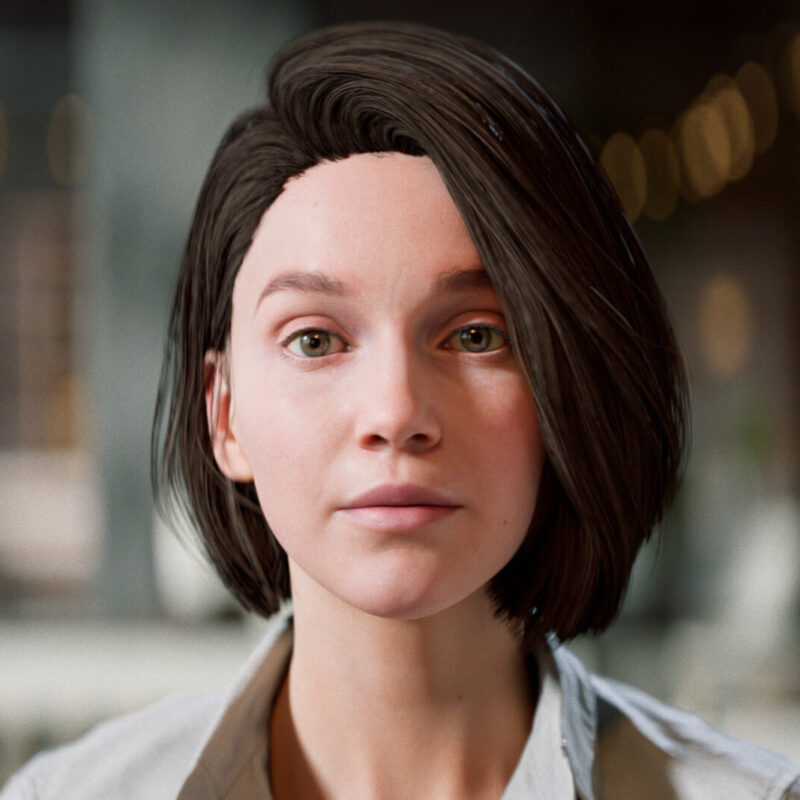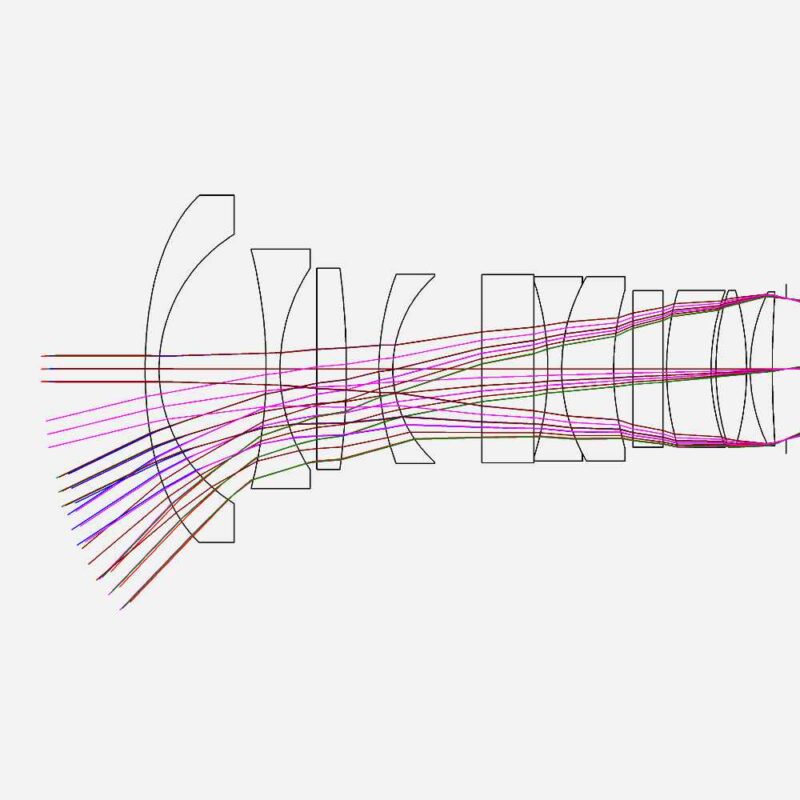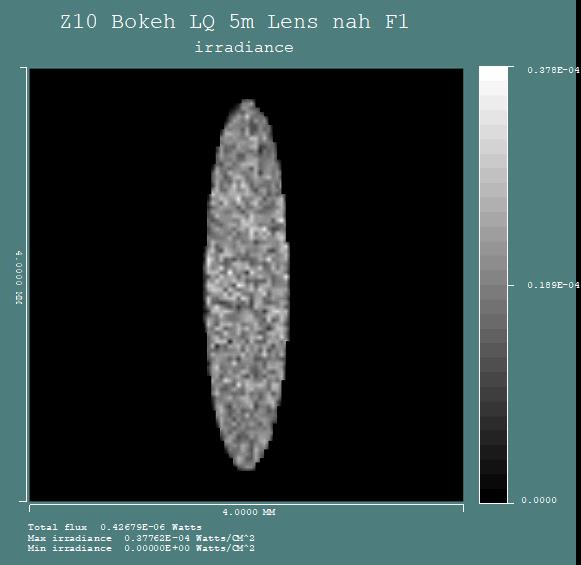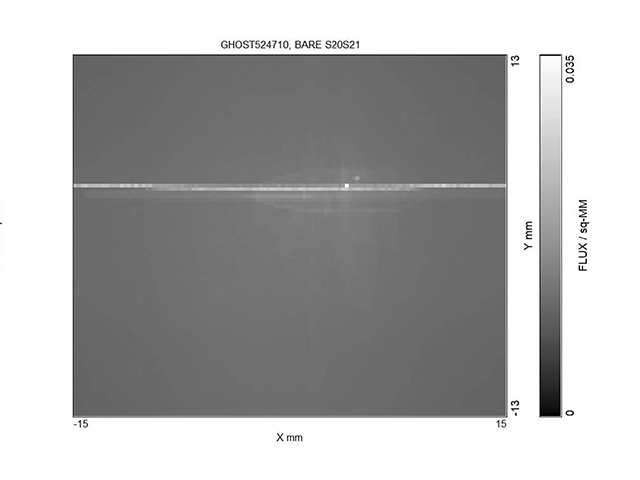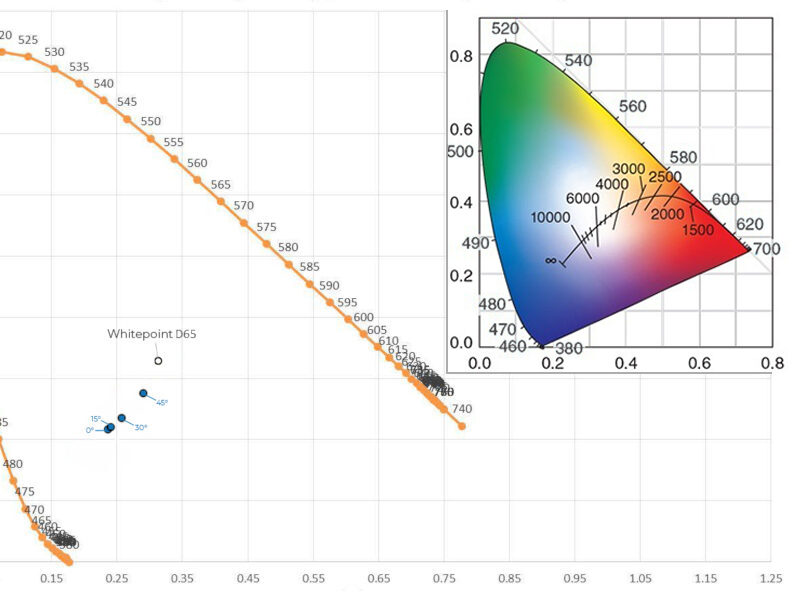The Science Behind the Look
Every lens has its unique characteristics, some desirable and others less so. Glaswerk has engaged in extensive dialogues with artists, including cinematographers, directors, and VFX artists, to define a cohesive, appealing look for their lenses. This collaborative approach led to the development of a clear aesthetic goal, which was then translated into specific physical properties.
Glaswerk established a precise optimization target for their optical engineers, ensuring that the final product would meet the artistic vision of industry professionals while maintaining technical excellence. This methodology bridges the gap between artistic intent and optical engineering, resulting in lenses that are not just technically proficient, but also creatively inspiring.
SIMULATIONS
OPTICAL DESIGN
Lens design starts with layout research, especially for complex anamorphics using crossed cylindrical elements, to match set looks and achieve extreme focal lengths without trade-offs, followed by iterative optimizations using specialized software.
REFLECTIONS AND STRAY LIGHT
Finished lens designs are tested for total reflections, where light reflects completely at an interface instead of transmitting, causing image loss. The mechanical design is then analyzed and optimized to minimize internal reflections and stray light for optimal performance.
3D ENVIRONMENTS
3D animation software with specialized render engines and plugins is used to simulate physically accurate images of 3D environments as viewed through the new lens design, enabling visualization of optical characteristics and performance before manufacturing.
OPTICS
RESOLUTION
High MTF means true detail contrast and resolution. Fake contrast boosts apparent sharpness without adding detail. This matters in portraits to retain natural skin texture without harsh, unnatural edge enhancements.
DISTORTION
Slight barrel distortion maintains a natural perspective by mimicking human vision’s peripheral curvature, avoiding the unnaturally rectilinear look of strong corrections, especially in wide angles where geometric perfection can feel visually artificial.
ABERRATION
Spherical aberrations create a gentle, organic softness with smooth focus transitions. In contrast, lateral and axial chromatic aberrations introduce unnatural color fringing, reducing image clarity and creating visually distracting, unpleasant artifacts.
BOKEH
UNIFORMITY
Bokeh differs from center to field due to optical aberrations like astigmatism and field curvature. Vignetting and mechanical cutoff clip light rays, producing deformed, cat’s-eye or clipped bokeh shapes towards image edges.
FOCUS TRANSITION
Both bokeh shape and the in-focus to out-of-focus transition, key to an organic look, can be simulated and optimised with specialised algorithms; otherwise, out-of-focus areas may appear unpleasantly textured and distract the viewer.
ARTIFACTS
Artifacts in bokeh are unwanted visual irregularities like onion rings, double edges, or harsh outlines in out-of-focus areas, caused by lens design or aberrations. Optimization and MRF polishing for aspheres can reduce these artifacts.
FLARES
GHOSTS
Ghosts form when light reflects multiple times between glass surfaces, creating secondary, out-of-focus images of bright sources. Each air-glass interface produces partial reflections that combine into visible flare artefacts called ghosts.
SHAPE
Ghosts are simulated by tracing internal reflections within the lens to identify their paths. Coating designs then selectively adjust reflection intensity at specific surfaces, enabling targeted suppression or enhancement of desired or unwanted ghost artefacts.
COLOR
Ghost color is controlled by adjusting coating layer thickness and materials. Simulations predict each surface’s reflection spectrum, using coatings to tailor ghost hue and intensity to maintain pleasant, non-distracting levels within the image.
COLOR
COLOR BALANCE
Color temperature describes a lens’s warm or cool cast (Kelvin), while tint is its green-magenta shift. Both result from glass and design, and can be calculated and optimized through glass selection to create color-matched lens sets.
COLOR VS. FLARES
Coatings can adjust a lens’s color temperature by altering spectral transmission, but reducing a specific tint may enhance flares in that wavelength; for example, correcting a green tint might increase green flares.
COLOR VS. ABerrATIONS
High-nd, low-νd glasses are used to correct chromatic aberrations but often transmit less blue light, creating a warmer look. Balancing their aberration correction role with desired color temperature is crucial in lens design.
